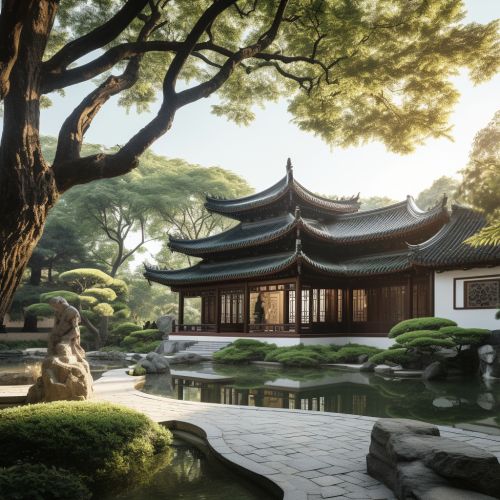Hubei Provincial Museum
Overview
The Hubei Provincial Museum is one of the best-known museums in China, located in the Wuchang District of the city of Wuhan, in Hubei Province. It is the most significant museum in the province and is among the first batch of "Key National Museums" that were established by the Chinese government.


History
The Hubei Provincial Museum was officially founded in 1953, with the amalgamation of the Hubei Provincial Museum and the Wuchang Museum. Its first director was the renowned archaeologist Li Ji. The museum has grown steadily over the years, and now occupies a total area of 81,909 square meters, including a construction area of 49,527 square meters.
Collections
The museum is home to over 200,000 historical artifacts, including porcelain, bronze ware, ancient musical instruments, ancient coins, jade, and paintings. It has a significant collection of artifacts from the Chu State, one of the seven warring states during China's Warring States period.
Bronze Collection
The museum's bronze collection is one of its most significant, with over 16,000 pieces. The collection includes a large number of items from the tomb of Marquis Yi of Zeng, discovered in 1978. The tomb, dating from 433 BC, contained an extraordinary number of high-quality bronze items, including bells, chimes, and other musical instruments.
Musical Instruments
The museum's collection of ancient musical instruments is one of the largest and most important in China. The most famous of these is a set of 65 bronze bells from the tomb of Marquis Yi of Zeng. The bells, known as the Zenghouyi Bells, are one of the most important archaeological discoveries of the 20th century. They are still capable of playing music from 2,400 years ago.
Jade Collection
The museum's jade collection includes over 10,000 pieces, dating from the Neolithic period to the Qing Dynasty. The collection includes a wide variety of items, including jade suits sewn with gold thread, jade burial objects, and jade ornaments.
Exhibitions
The Hubei Provincial Museum regularly hosts both permanent and temporary exhibitions. The permanent exhibitions include the "Chu Culture Exhibition", "Hubei History Exhibition", and "Marquis Yi of Zeng Exhibition". The museum also regularly hosts temporary exhibitions on a wide range of topics, often in collaboration with other museums and institutions.
Research and Conservation
The Hubei Provincial Museum is not only a place for the public to learn about history and culture, but also a research institution for the study of archaeology, history, and art. It has a team of researchers who work on the conservation and restoration of the museum's collections, and on archaeological excavations.
Education and Outreach
The museum also has a strong focus on education and outreach. It offers educational programs for children and adults, including workshops, lectures, and guided tours. The museum also works with schools and community groups to promote the understanding and appreciation of Hubei's history and culture.
